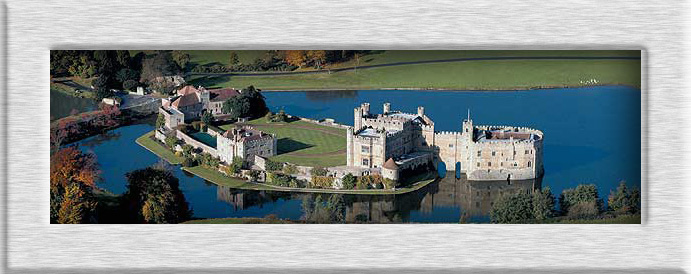

|
Set in 500 acres of beautiful parkland, a visit to Leeds Castle in the garden of England is full of discovery. Open all year round, its special blend of heritage and history, glorious gardens, attractions, programme of events, and licensed restaurant make it the perfect choice for a day out. The stone bridge across which you walk to the castle would originally have been a wooden drawbridge. The gatehouse looks much as it would have in the 13th century; it would have accommodated servants and horses, as well as providing essential fortification against attack. For a short history of Leeds castle please read on.
Please note the owners of the castle would like you to know that due to space restrictions, and the fragile interiors, pushchairs cannot be permitted inside the castle. Visitors with babies will find slings available inside the castle front hall. 'Heelies' may not be worn inside the castle or other buildings. Whilst they try to keep the private rooms of the castle open to visitors when they can, not all rooms may be open at all times. |
|
|
|
|
|
|
|
|
|
|